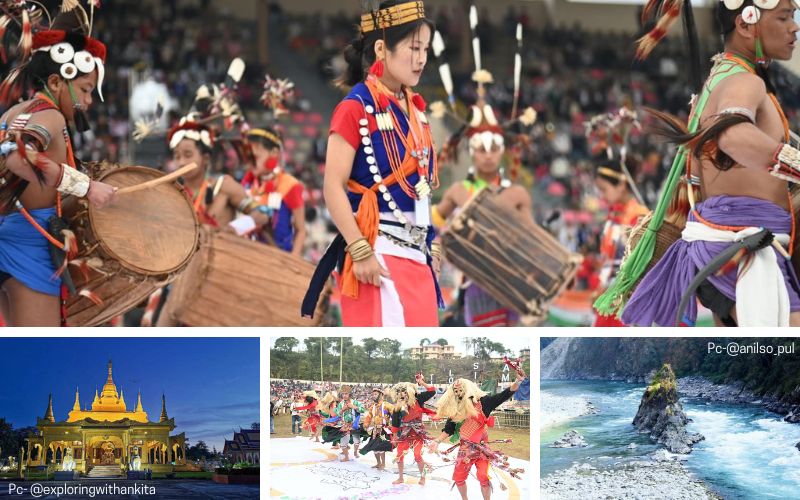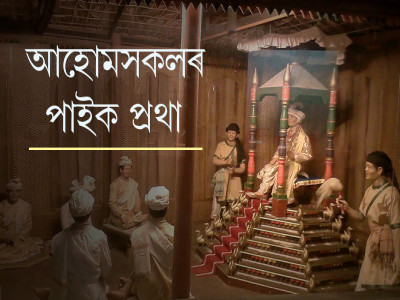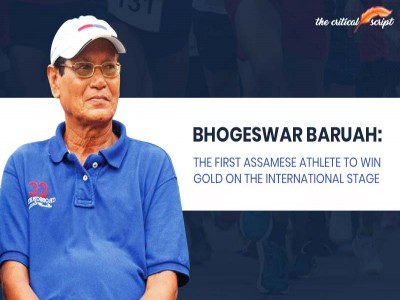
Preserving Culture A Way Forward For Advancing Arunachal
Arunachal Pradesh is perhaps among those rare states in India to boast a wide spread of diverse tribes and indigenous cultures, nestled together in peaceful coexistence. Its unity and diverse outlook is a true reflection of all that India stands for, especially under the ambit of cultural preservation.
The Apatanis, Adis, Monpas, Nyishi, Tagins, Galos, Khamtis, Wanchos, and the several major indigenous tribes of Arunachal Pradesh have all contributed to the unique cultural amalgamation of the land, dating back to time immemorial. The thing about Arunachal Pradesh is that, once you visit the state, you’ll not only be mesmerized by the bounty of rich flora and fauna engulfing the region but will also immerse in the ancient customs and traditions of the people dwelling here.
However, the onset of technological advancement, aggressive push for consumerism, and rapid globalization have all proven to revolutionize the lifestyle of the masses at community levels, while slowly letting go of age-old traditions. This is true for most communities across the globe, and you could say that Arunachal Pradesh, on its fast-track path to development stands to lose out on its beautifully diverse cultural significance over time.
Although the Government of Arunachal Pradesh has a strong stand towards the development of the region, it has an equally strong grip on policies to carefully preserve the culture and tradition of the land, along with nature conservation. One need not look back far; a quick glimpse of the year 2022 will throw light into a series of praise-worthy steps taken by the Government of Arunachal Pradesh in this regard.
In December 2022 during the inauguration of an indigenous prayer hall in Lekhi village under Papum Pare district of Arunachal Pradesh, Deputy Chief Minister Chowna Mein announced that the budget allocation to the Department of Indigenous Affairs for the FY 21-22 increased to Rs. 42 Cr, for carrying forward various activities under cultural preservation. The establishment of the indigenous prayer hall in Lekhi village was also undertaken in the same spirit, along with several other prayer halls, learning centres and community halls dedicated to cultural activities across Arunachal Pradesh.
In this context, we have seen some effort in the right direction, Chowna Mein had reviewed the progress of the 37.87 Cr Parshuram Kund Development Project (PKDP) being implemented at the holy pilgrimage site in the Lohit District. According to a new DPR (detailed project report) submitted to the Central Govt., the project is not to be estimated at 150 Cr.
The Golden Pagoda of Namsai, also known as Kongmu Kham, in the Tai-Khamti language, last year had two new structures viz., an Ordination Hall and a Buddha Temple dedicated to the people by His Eminence, Reverent Loung-Phow Somphon from Thailand. The Ordination Hall and Buddha Temple were donated by Mein and his family members while the Golden Statue was donated by Saphaboon Foundation, Thailand & San Francisco and Mrs Laongdao Boon Prasert from the United States of America and Buddha Relic was gifted by His Eminence, Sangha-Raja of Sri-Lanka.
While attending the Indigenous Faith Day celebration organized by the Indigenous Faith & Cultural Society of Arunachal Pradesh (IFCSAP) at Namsai in December last year, Mein had said, “Language and culture is our identity and we must zealously protect and promote our language & culture. We must also strive to revive and promote our folk songs and indigenous music. We must preserve them either in written documents or in audio-visual format too”, he added. He said that a cultural revolution is going on to keep alive indigenous cultures & traditions and further stated that the Govt. will continue to support the Indigenous Faith and Cultural Society of Arunachal Pradesh in their endeavours for the preservation and promotion of the rich cultures & traditions.
Following the successful conclusion of the Indigenous Faith Day celebration, the IFCSAP has organized the 7th State Level Indigenous Youth Festival which began last Wednesday on 18th January, and will continue till 22nd January, 2023. The five-day fest is one of the few cultural events in Arunachal Pradesh which is celebrated by all tribes of the state, irrespective of their community, clan or religious affirmations. The event is a brilliant platform to display the cultural amalgamation of the diverse ethnic communities native to Arunachal Pradesh, and encourages the youths to participate in the cultural interaction. Mein, attended the festival on Thursday, January 19 along with noted dignitaries such as former Rajya Sabha MP Tarun Vijay, former Chief Minister Mukut Mithi, Namsai MLA Chau Zingnu Namchoom, and many more. While interacting with the audience present at the festival ground, Mein reinforced the Govt. of Arunachal Pradesh’s commitment toward building indigenous prayer halls and Gurukuls in every district of the state, for the purpose of advancing and preserving cultural knowledge and value systems adhering to the diverse spread of indigenous communities in Arunachal Pradesh.
To further preserve the distinct indigenous faith and culture of the tribals of Arunachal Pradesh, the state government has taken up several initiatives, such as providing an honorarium to 3,000 indigenous priests of the region and the establishment of two first-of-their-kind local Gurukul Schools: the Nyubu Nyvgam Yerko (Gurukul for Nyishis) at Rang village in East Kameng district and the Mengjik Mengkok Rigu (Gurukul for Galos) at Basar in Lepa Rada district.
A number of Indigenous Prayer Centers have also been established throughout the state, such as the Donyi Polo Kumko in Pasighat and the Karguu-Gamgww Kumko in Lekhi Village. To further preserve indigenous culture, the administration is also upgrading Siddharth Vihar Community Hall in Itanagar and documenting all cultural heritage.
The start is noteworthy, but much more needs to be done. If channeled the right way, culture is an effective social connector that can help overcome economic and political barriers in Arunachal Pradesh.
As rightly put by Jamaican activist Marcus Garvey- “A people without the knowledge of their past history, origin and culture is like a tree without roots”.
We need to be that tree with deep roots (respect and appreciation for our history and culture).
Disclaimer: The opinions expressed in this article are those of the author's. They do not purport to reflect the opinions or views of The Critical Script or its editor.

Newsletter!!!
Subscribe to our weekly Newsletter and stay tuned.

















Related Comments